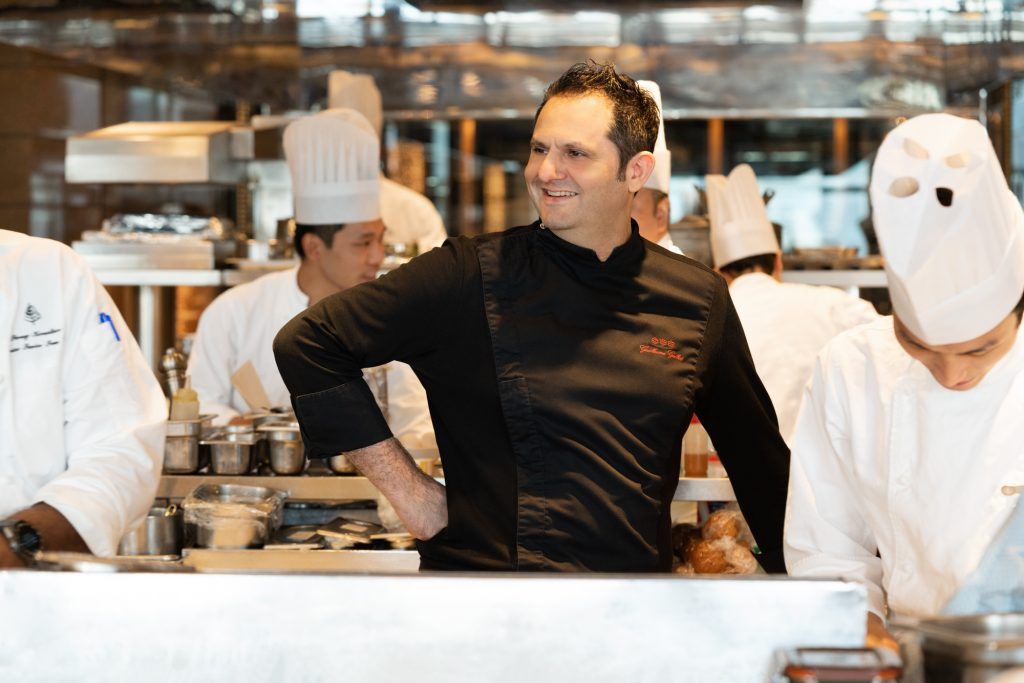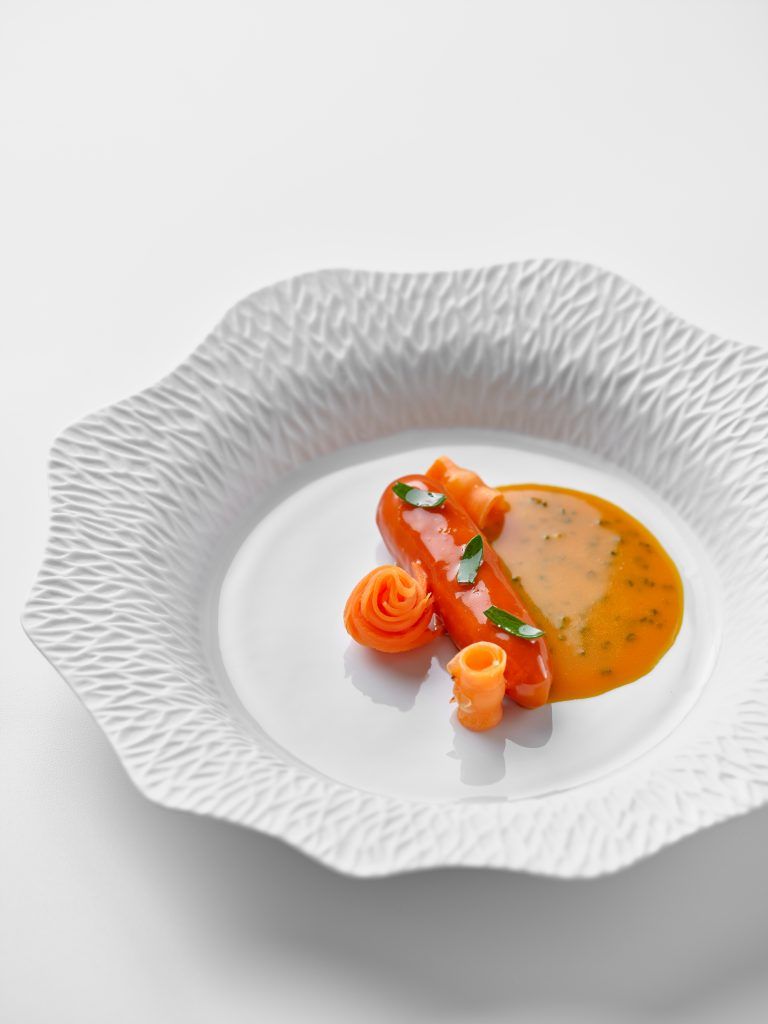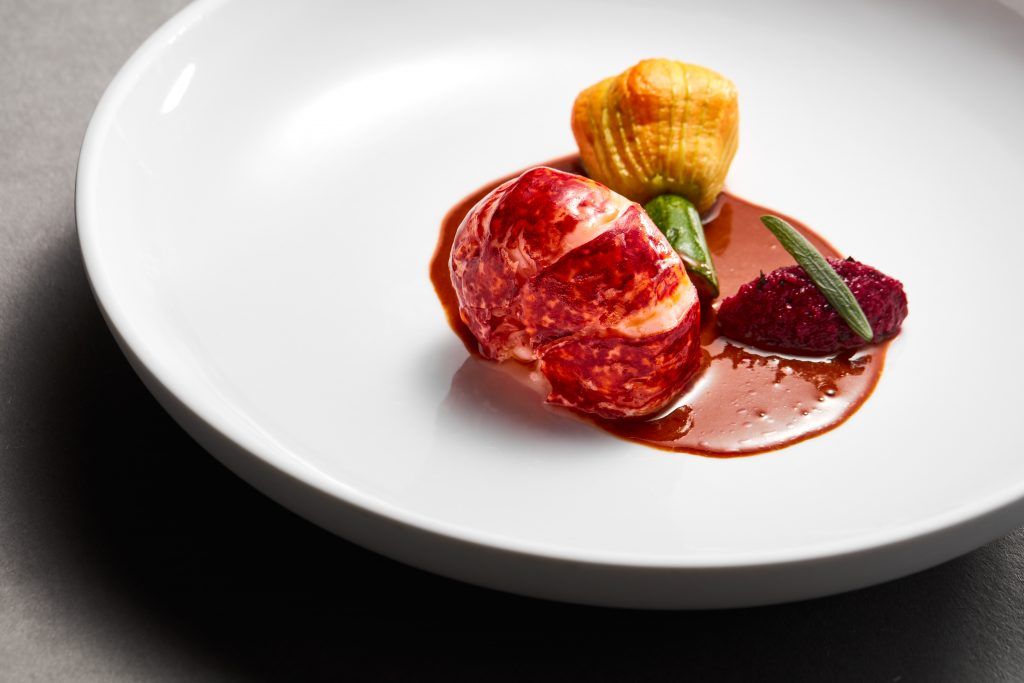In Hong Kong for a four-hands dinner at Caprice, Le Gabriel’s Jérôme Banctel joins the Four Seasons’ chef Guillaume Galliot in conversation about the Paris restaurant’s newly attained third Michelin star.
“One, two, three stars – some achieve it sooner, some achieve it later, and some achieve it never.” To chef Guillaume Galliot of the Four Seasons Hong Kong’s three-Michelin-star bastion of French fine dining Caprice, that’s the harsh truth behind one the most coveted accolades in the world of gastronomy.

Statistically, the reality is that for most chefs, even after decades of long, gruelling hours in the kitchen, a third star will elude them for the entirety of their careers. Which makes it all the more impressive when they do attain it, as is the case with Galliot’s compatriot and longtime friend Jérôme Banctel, who was in town to join the Caprice chef for one of the most anticipated four-hand dinners of the year.
When La Réserve Paris hotel opened in 2015, with it came Le Gabriel, which Banctel has led ever since; before that, he’d worked in some of the city’s most decorated restaurants, including Le Jules Verne, Les Ambassadeurs and Lucas Carton. But it was at Le Gabriel where the chef truly honed his cooking style and culinary philosophy.
Through his impeccable technical precision, an ability to refine dishes by stripping away unnecessary elements to better spotlight the essence of each ingredient, and signature creations such as the limestone water-cooked sand carrot with acid ginger sauce, Le Gabriel was off to stellar start. Within a year of opening, it already had two Michelin stars, a rare achievement even in Paris. But for someone as driven in the pursuit of perfection as Banctel, it also created a new challenge: to chase that elusive third star.

“The hotel opened in 2015, and immediately in the awards ceremony in 2016 we’d achieved two stars,” he recalls. “So to receive the third star after eight years is very motivating. When I’d had two for some time, I spoke to Guillaume about what was needed for the third, and I realised I needed some changes in the kitchen. Being a French chef in Paris cooking French cuisine means you need to create your own story. When a French chef moves to Asia or other parts of the world, they already have that story of coming from France and bringing their cuisine abroad, but when you do the same in Paris, you need a story that separates you from everyone else doing similar things. For me, that story revolves around my hometown in Brittany.
“Another thing I realised speaking to Guillaume is that stability is crucial,” Banctel adds. “To achieve that third star, you need both a very strong team in the dining room and the kitchen, and you really need to think about the recipes and how you can keep your execution consistent. When you have two stars and you’re just maintaining them, you can still change your dishes last minute and have more variations day to day. But for three stars, you need a strong structure to provide you with consistency. Everything needs to be well thought out and executed to perfection, every single day.”

Galliot, who helped Banctel come to that conclusion, obviously agrees with the philosophy. After joining Caprice in 2017, he helped the restaurant regain its three-star rating in 2019, an accolade it’s held on to since then.
“For us, I think what made the difference was working more with the details, but most importantly, the consistency,” Galliot explains. “Being able to maintain such a high standard day in, day out isn’t easy, but it’s non-negotiable if attaining three Michelin stars is what you want. Apart from that, it’s also about the maturity of the chef. We all know how to cook chicken or meat or fish, but it’s about bringing everything together that makes the difference, and how precise you are. It’s all about that maturity in your cooking.”

Reaching the pinnacle in their field is no doubt an incredible feeling, but it’s also often accompanied by a greater sense of pressure: the chefs not only have to meet the demanding criteria of the Michelin inspectors and food critics, but also the heightened expectations of diners, who now expect nothing short of the best. How do they cope with this?
“Right now, there’s a sense of relief in achieving my third star, so I’m not thinking about any pressure,” Banctel says. “But it’s something I’m conscious of, and I know next year it’ll be more challenging because I have to retain the three stars, and I can already feel the change in the clientele and their expectations. The pressure will definitely come, but it’s something to think about
later on.”
“There’s pressure, but I see it as a positive pressure,” Galliot adds. “You become more focused, you push yourself to be more creative, and it also gives you a certain sense of security to push the boundaries. The more confident you are, the more things you’re willing to try, and the better you will become. That is what a third Michelin star can do for you.”
The information in this article is accurate as of the date of publication.

